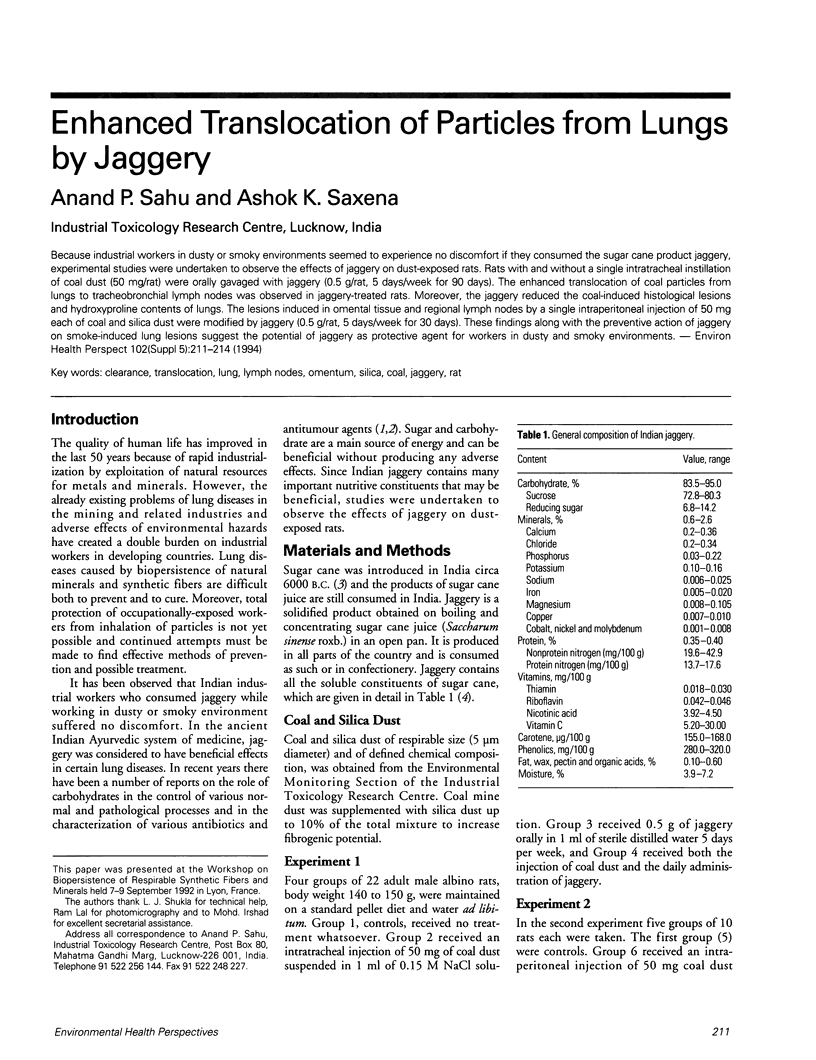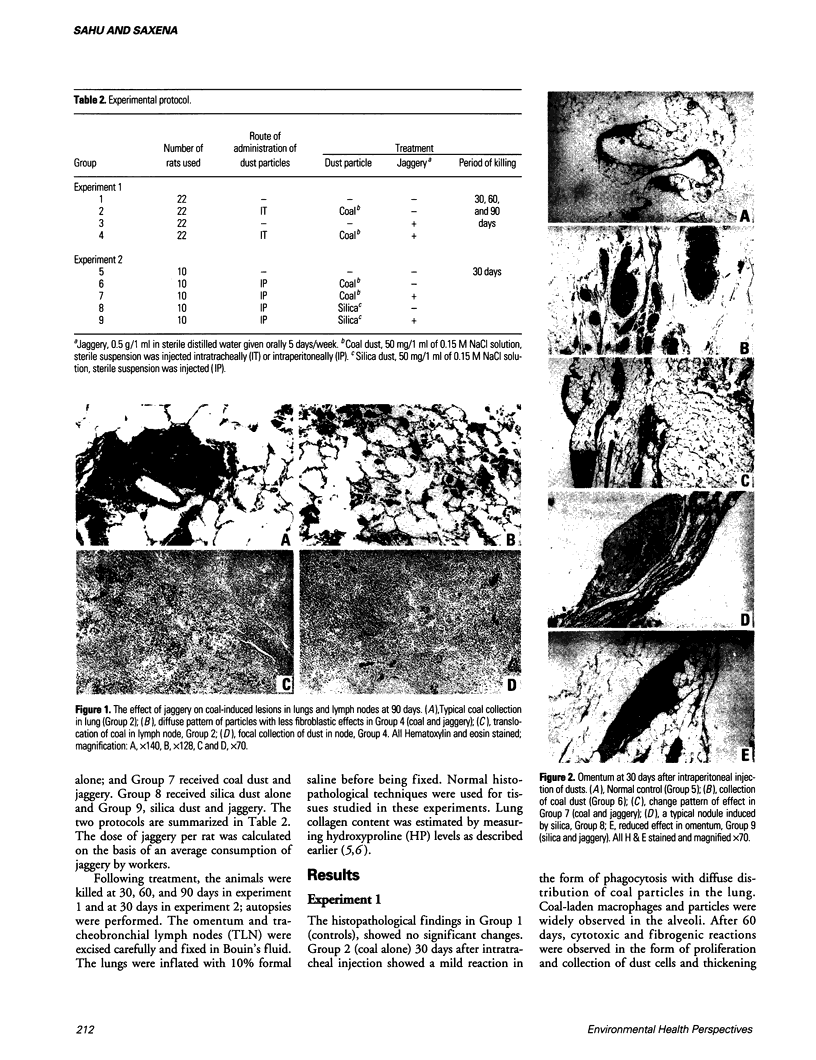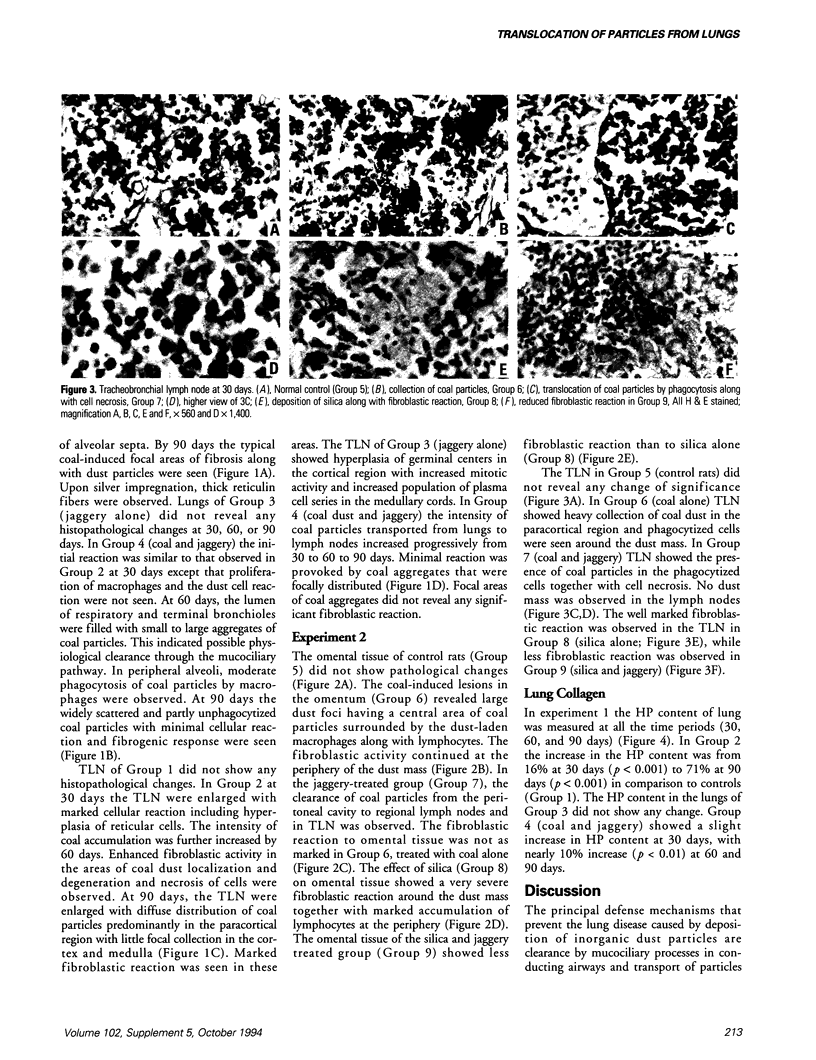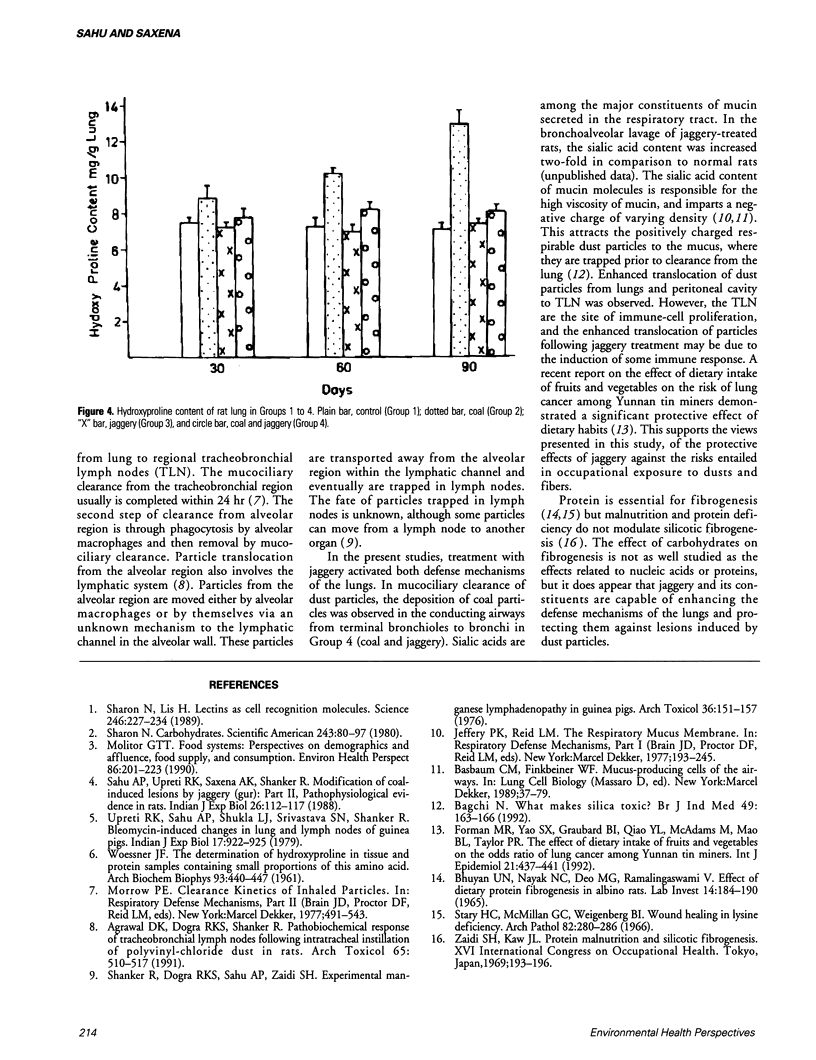Abstract
Because industrial workers in dusty or smoky environments seemed to experience no discomfort if they consumed the sugar cane product jaggery, experimental studies were undertaken to observe the effects of jaggery on dust-exposed rats. Rats with and without a single intratracheal instillation of coal dust (50 mg/rat) were orally gavaged with jaggery (0.5 g/rat, 5 days/week for 90 days). The enhanced translocation of coal particles from lungs to tracheobronchial lymph nodes was observed in jaggery-treated rats. Moreover, the jaggery reduced the coal-induced histological lesions and hydroxyproline contents of lungs. The lesions induced in omental tissue and regional lymph nodes by a single intraperitoneal injection of 50 mg each of coal and silica dust were modified by jaggery (0.5 g/rat, 5 days/week for 30 days). These findings along with the preventive action of jaggery on smoke-induced lung lesions suggest the potential of jaggery as protective agent for workers in dusty and smoky environments.
Full text
PDF



Images in this article
Selected References
These references are in PubMed. This may not be the complete list of references from this article.
- Agarwal D. K., Dogra R. K., Shanker R. Pathobiochemical response of tracheobronchial lymph nodes following intratracheal instillation of polyvinylchloride dust in rats. Arch Toxicol. 1991;65(6):510–517. doi: 10.1007/BF01977366. [DOI] [PubMed] [Google Scholar]
- BHUYAN U. N., NAYAK N. C., DEO M. G., RAMALINGASWAMI V. EFFECT OF DIETARY PROTEIN ON CARBON TETRACHLORIDE-INDUCED HEPATIC FIBROGENESIS IN ALBINO RATS. Lab Invest. 1965 Feb;14:184–190. [PubMed] [Google Scholar]
- Bagchi N. What makes silica toxic? Br J Ind Med. 1992 Mar;49(3):163–166. doi: 10.1136/oem.49.3.163. [DOI] [PMC free article] [PubMed] [Google Scholar]
- Forman M. R., Yao S. X., Graubard B. I., Qiao Y. L., McAdams M., Mao B. L., Taylor P. R. The effect of dietary intake of fruits and vegetables on the odds ratio of lung cancer among Yunnan tin miners. Int J Epidemiol. 1992 Jun;21(3):437–441. doi: 10.1093/ije/21.3.437. [DOI] [PubMed] [Google Scholar]
- Molitor G. T. Food systems: perspectives on demographics and affluence, food supply and consumption. Environ Health Perspect. 1990 Jun;86:201–223. doi: 10.1289/ehp.9086201. [DOI] [PMC free article] [PubMed] [Google Scholar]
- Sahu A. P., Upreti R. K., Saxena A. K., Shanker R. Modification of coal-induced lesions by Jaggery (gur): Part II--Pathophysiological evidence in rats. Indian J Exp Biol. 1988 Feb;26(2):112–117. [PubMed] [Google Scholar]
- Shanker R., Dogra R. K., Sahu A. P., Zaidi S. H. Experimental manganese lymphadenopathy in guinea pigs. Arch Toxicol. 1976 Oct 28;36(2):151–157. doi: 10.1007/BF00351975. [DOI] [PubMed] [Google Scholar]
- Sharon N., Lis H. Lectins as cell recognition molecules. Science. 1989 Oct 13;246(4927):227–234. doi: 10.1126/science.2552581. [DOI] [PubMed] [Google Scholar]
- Stary H. C., McMillan G. C., Weigensberg B. I. Wound healing in lysine deficiency. Arch Pathol. 1966 Sep;82(3):280–286. [PubMed] [Google Scholar]
- Upreti R. K., Sahu A. P., Shukla L., Srivastava S. N., Shanker R. Bleomycin induced changes in lungs & lymph nodes of guineapigs. Indian J Exp Biol. 1979 Sep;17(9):922–925. [PubMed] [Google Scholar]
- WOESSNER J. F., Jr The determination of hydroxyproline in tissue and protein samples containing small proportions of this imino acid. Arch Biochem Biophys. 1961 May;93:440–447. doi: 10.1016/0003-9861(61)90291-0. [DOI] [PubMed] [Google Scholar]

















